|
A friend of mine happen to have a pair of
Snell E/III speakers in storage and I had them for testing and
listening. A thorough review here from
Stereophile with some background info.
I've done my share of
2-ways based on an 8" midbass and certainly we can get a lot of good
sound by simple means and I'm always curious to hear what others have
made from this concept.
Initially I set up the speakers in our living
room and got the impression of a balanced sound with good integration of
the midbass and tweeter. Not particular dynamic and not particular
transparent but an overall pleasant sound that didn't favour any
particular genre but managed well whatever I put on the turntable. This
was before I removed the midbass driver and discovered that the damping
material was totally absent in the upper part of the cabinet. In fact a
dense roll of something similar to acoustilux was thrown into the
cabinet and rested in the lower part of the cabinet. See below. I have a
hard time thinking this was meant to be as the un-damped upper cabinet
would cause serious reflection towards the thin paper cone and cause
smear and distortion.
After proper distribution of the damping sheet
covering the entire upper cabinet and to some extent the lower
compartment - as far as it could reach, the sound was completely changed and resolution and
transparency was greatly enhanced to as much as these drivers can
manage. Also taking into account the shortcomings of the crossover
components. I guess we can squeeze even more from these drivers with
proper crossover components. I didn't try this, but I would give it 2 x
3.3 uF Alumen-Z for the tweeter and 2 x 8.2 uF Superior-Z for the bass
section. No need to change coils. They appear OK and this is not where
major sonic improvements come from, nor from resistors. The attenuator
worked well after all these years, see measurements below.
All in all a pleasant experience and I guess we
could make a similar construction today from e.g. SEAS CA22RNY and
ScanSpeak D2608/913000 tweeter and get an even better sound from proper
crossover components. Read at bottom of page.
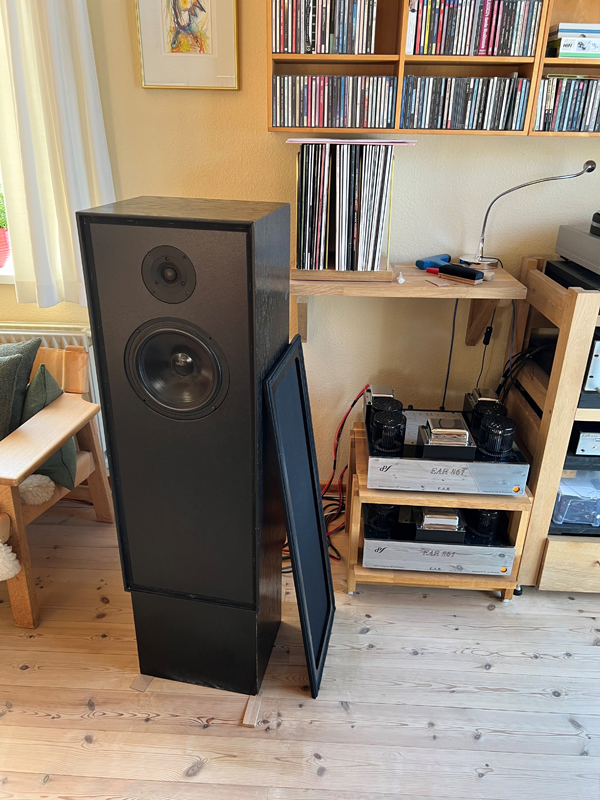
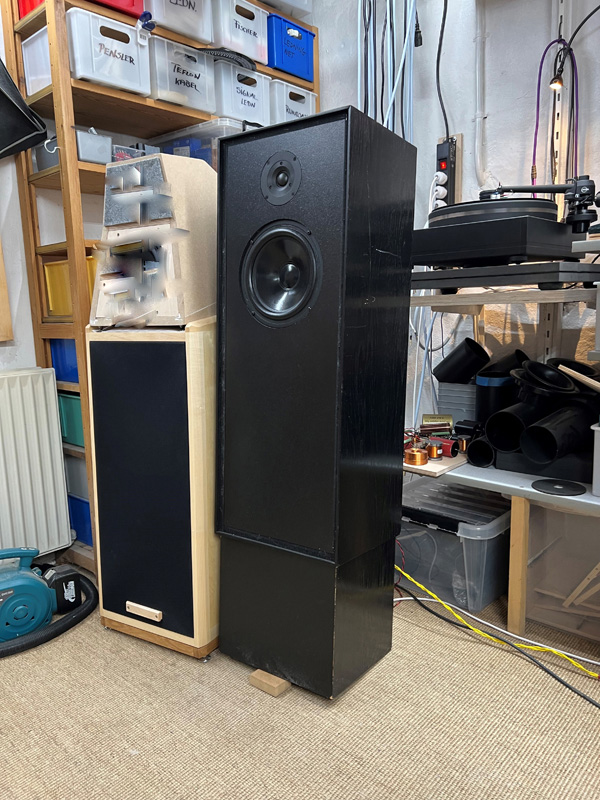
My friends' speaker came with the original
stands, which are quite heavy, but here lack some feet/spikes. Not sure
what they originally had.
The cabinets were surprisingly heavy. On its stands, quite a tall skinny
runt, and they certainly need some adjustable feed to make a study
setup.
Cabinets are approx. 33 x 89 x 28 cm (W x H x D).
Internal volume ~56 litre. Quite a lot for an 8" driver with an assumed
relatively high Qt. I can't find the data sheet.
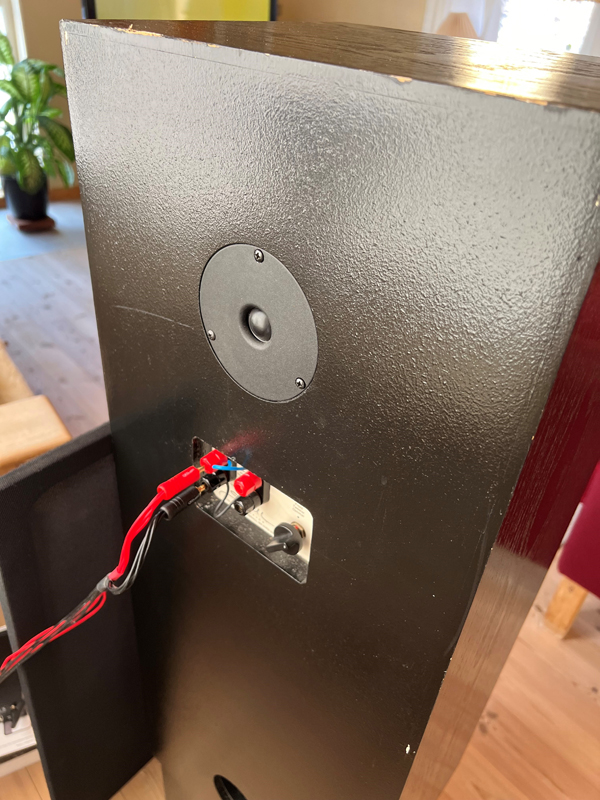
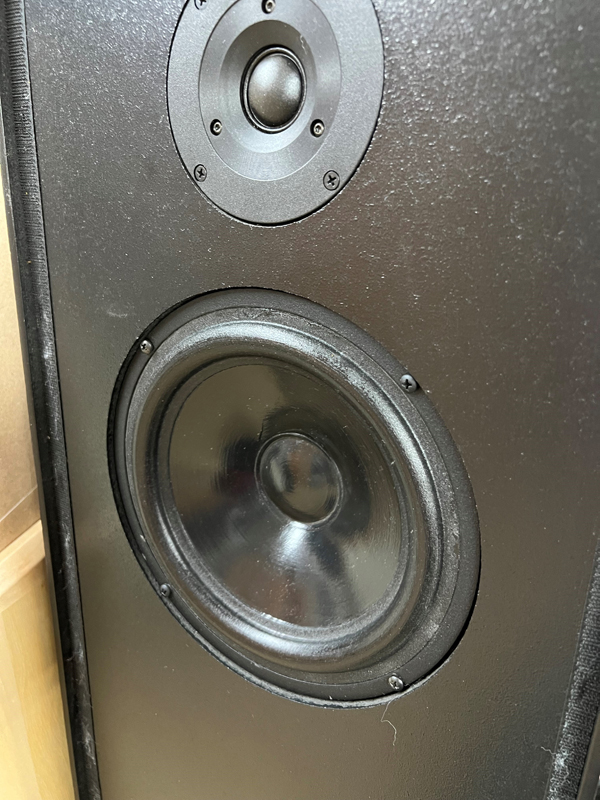
Cabinets appear to be made from 3/4" and 1"
(front and back) chipboard with a single internal brace. The rear
tweeter didn't work - and generally I don't fancy rear tweeters, so I
didn't care to look further into this.
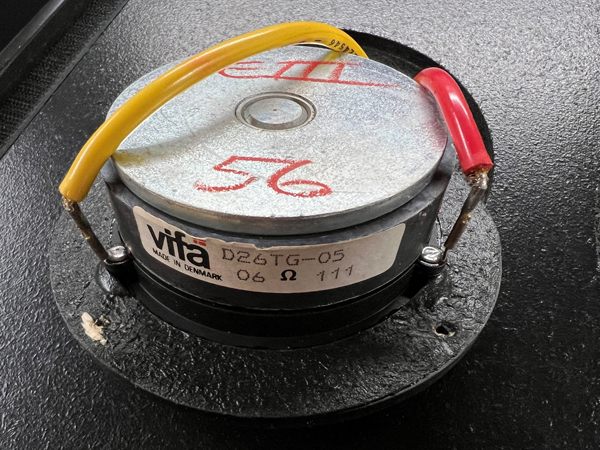
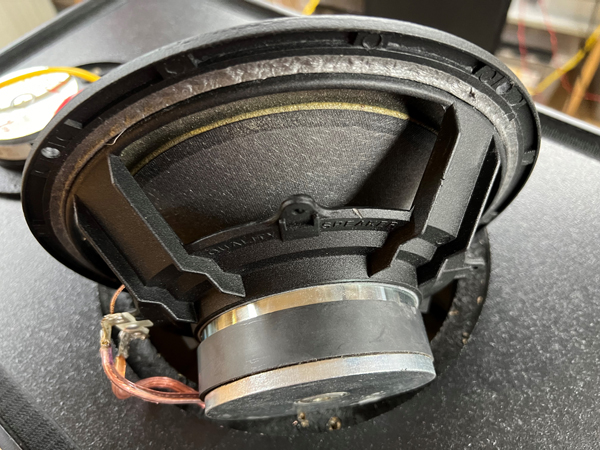
Tweeter: Vifa D26TG-05-06, bass: Vifa
M21WN-07-04.
The rear tweeter should be Vifa D19TD-05-08.
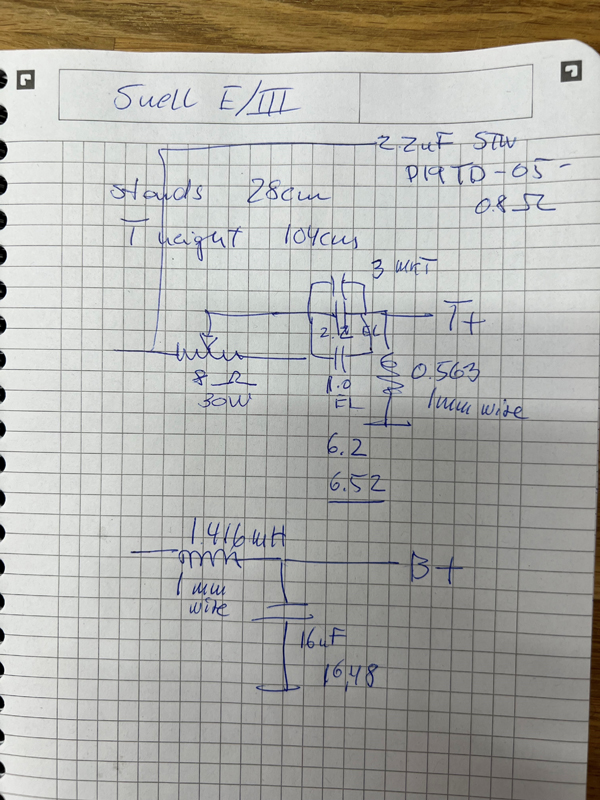
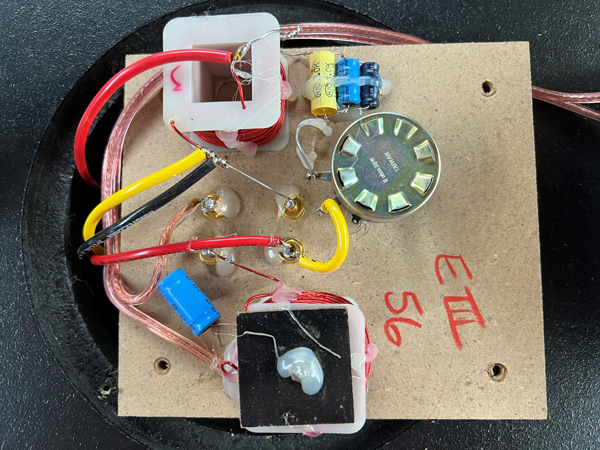
The crossover and my note book. Fairly modest
quality if I may say so and a weird combination of electrolytics and MKT
(?) caps. Why on Earth not at least 2 x 3.3 uF MKTs? I measured 6.52 uF
from this combo.
The rear tweeter runs through a 2.2 uF capacitor.
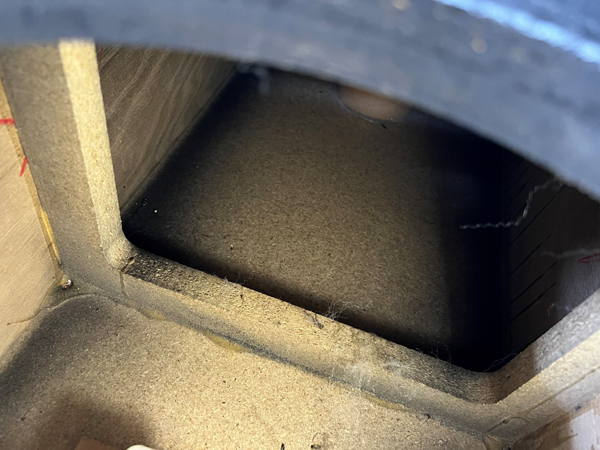
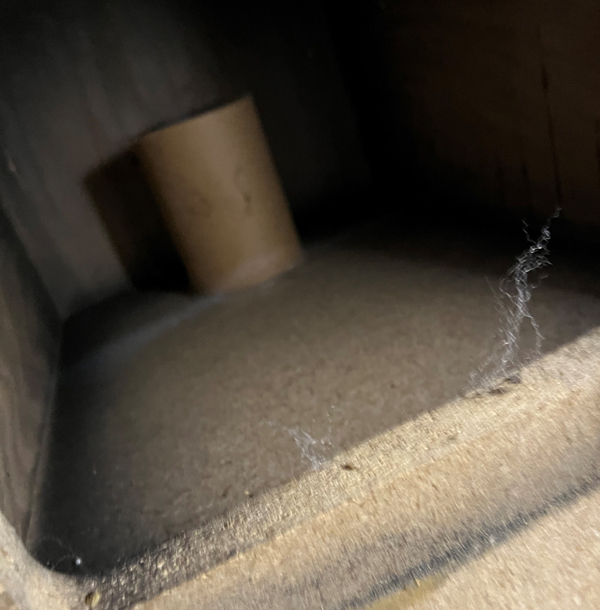
Internal view with the single brace and the
cardboard port placed quite close to the bottom to the rear side.
Removing the bas driver revealed a roll of damping material thrown into
the speaker and placed in the bottom half of the cabinet - not damping
behind the main driver in the upper part of the cabinet. I have a hard
time believing this was meant to be, rather a Snell worker having an
early leave on job. I unfolded the roll of damping and placed it mostly
in upper cabinet and letting it reach as low as possible into the lower
section. This make a HUGE change to the sound.
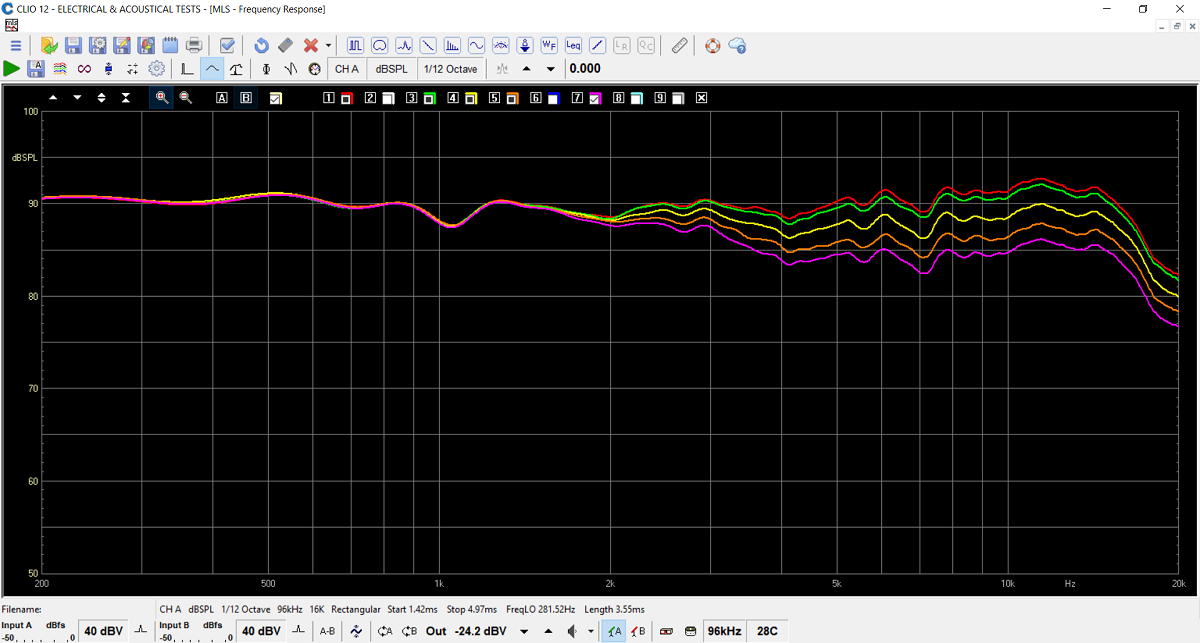
Above the action of the tweeter variable
resistor in different positions. Quite a sensible mode of action from
zero attenuation (red) to max (purple).
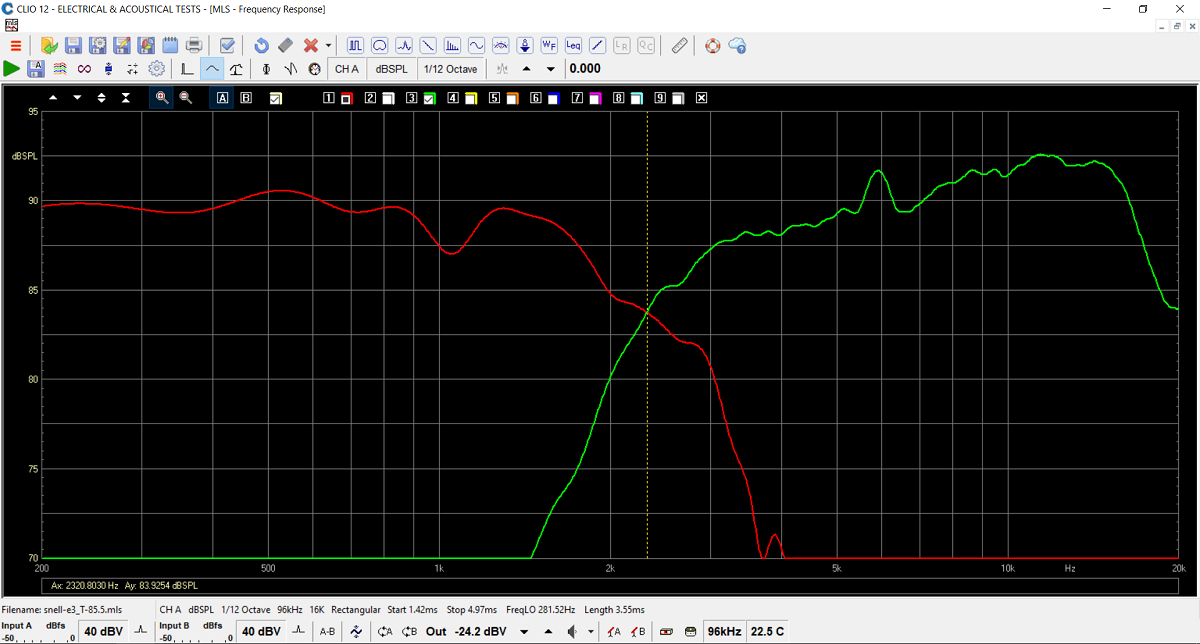
Response of midbass and tweeter driven from
crossover.
Point of crossover around 2300 Hz.
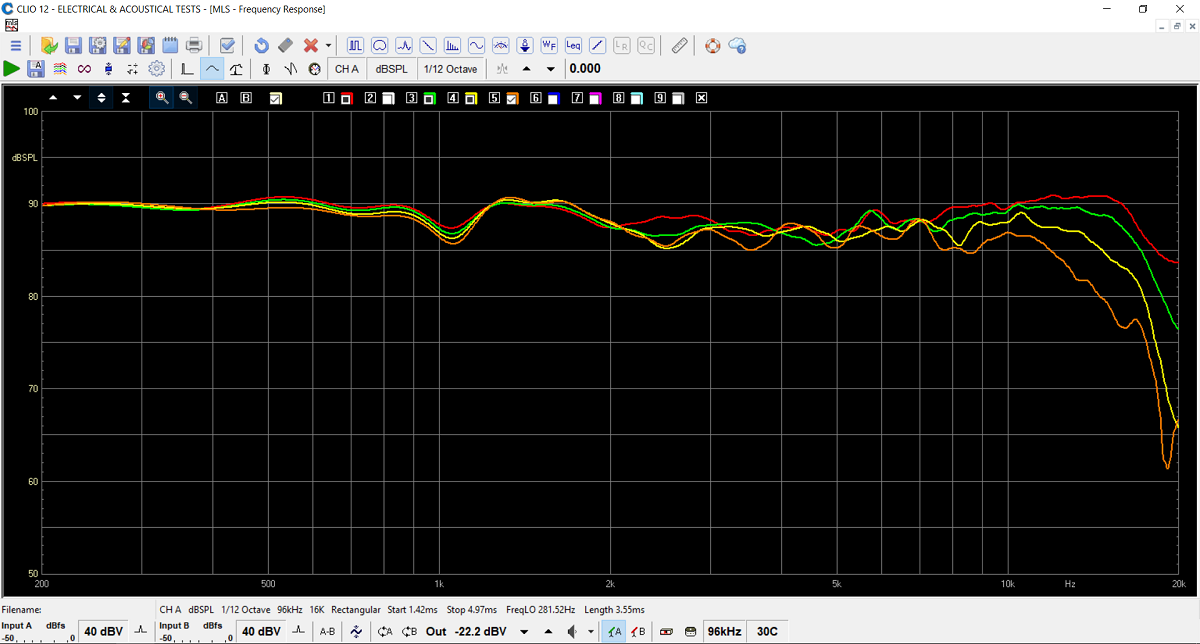
Horizontal dispersion @ 0, 10, 20, 30 deg.
off-axis.
Pretty good I should say.
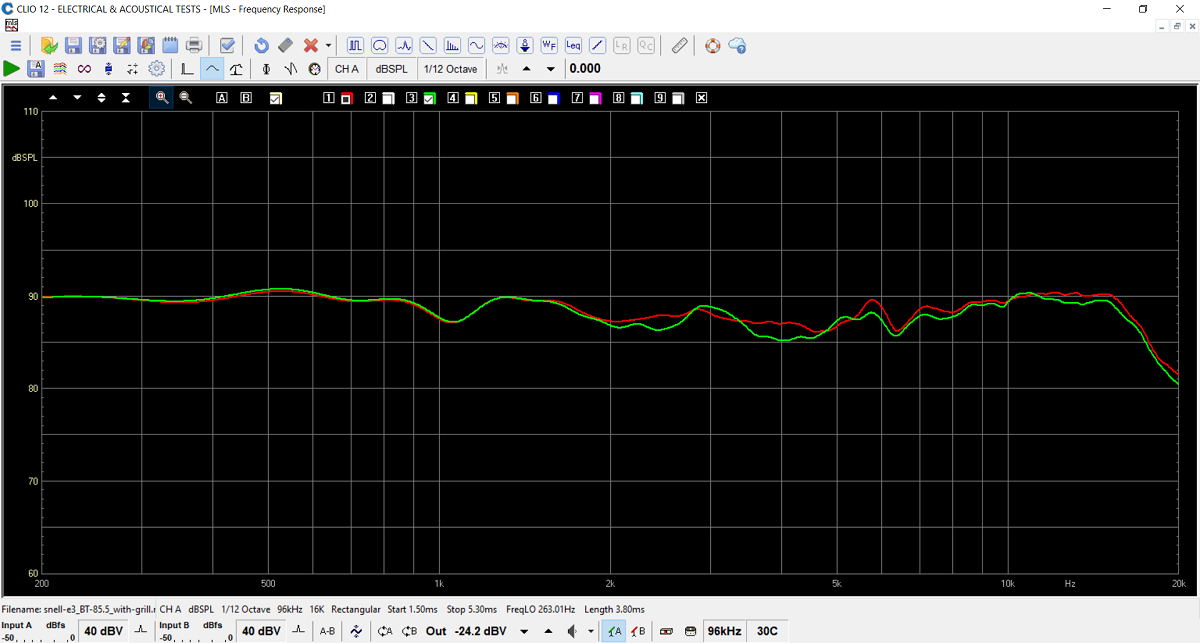
Response with (red)/without(green) grill.
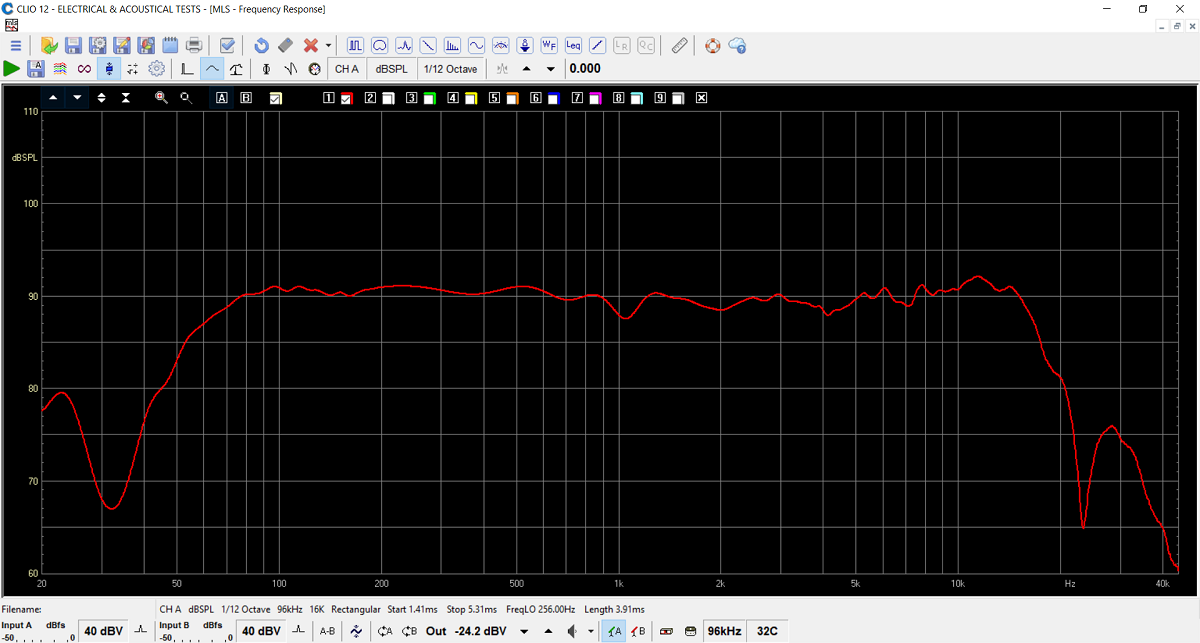
SPL merged with bass nearfield response @ 175
Hz.
System sensitivity around 90 dB. Would be an easy load for a NAD3020 of
that time.
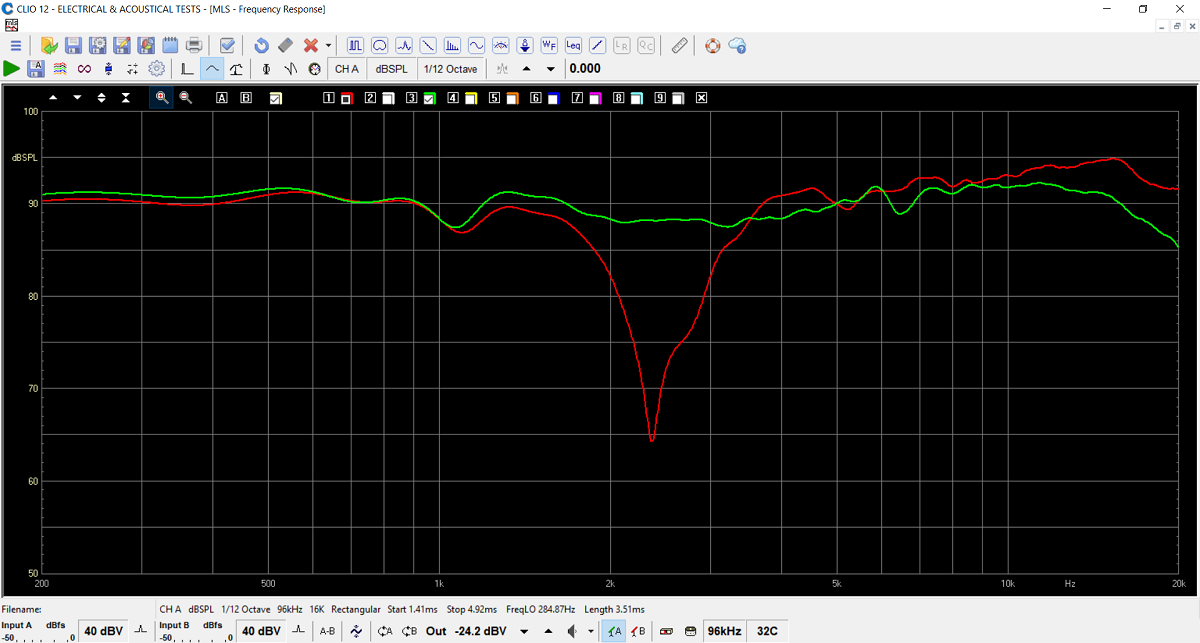
SPL with inverted tweeter polarity (red).
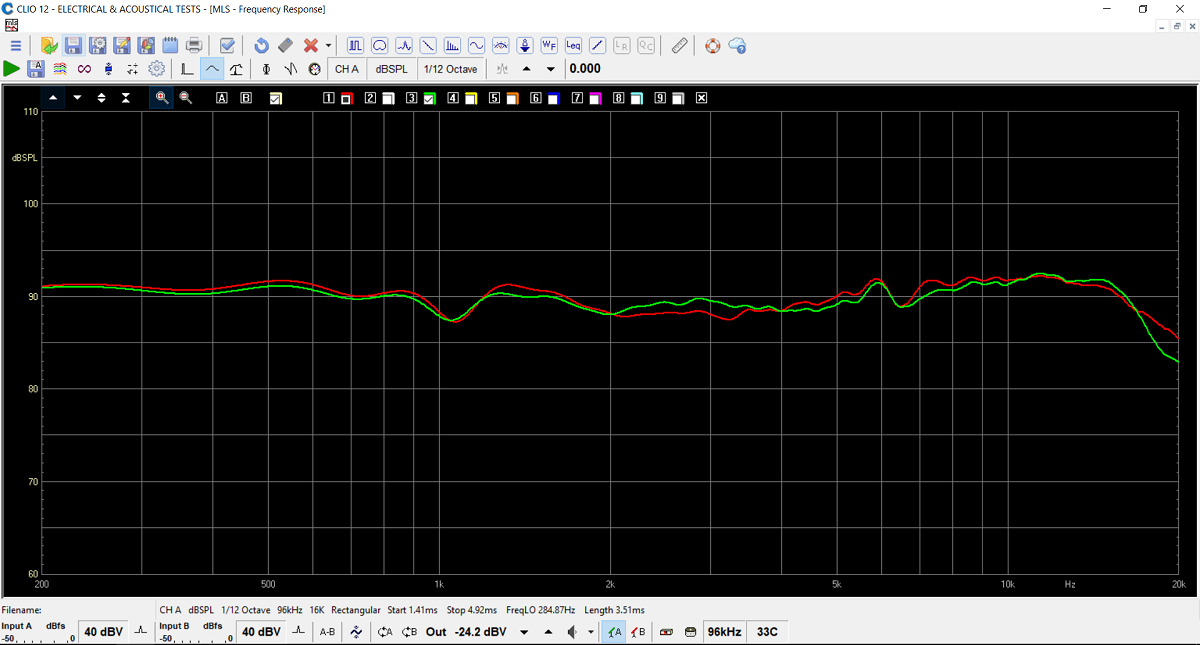
SPL of unit 1 and 2. Quite a matched pair.
System sensitivity around 90 dB/2.8V/1 meter.
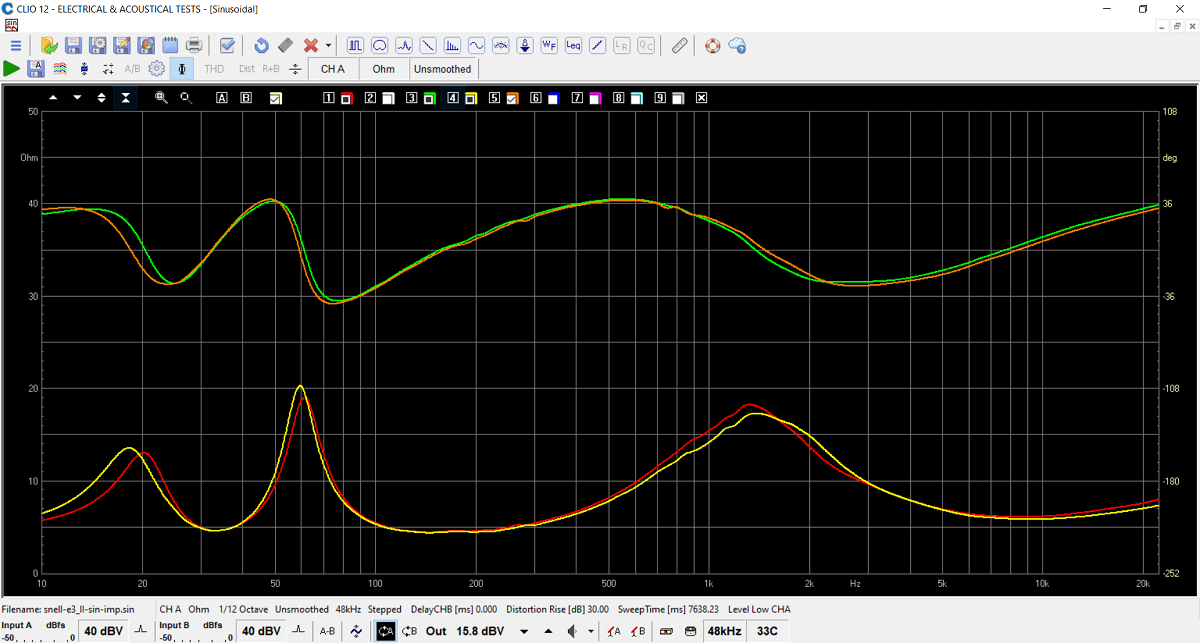
Impedance of the two units. Seems an easy
load.
Port tuning around 33 Hz.
Simulation of similar construction based on -
SEAS CA22RNY and ScanSpeak D2608/913000.
Based on measurement from other construction using these drivers.
4th order crossover, point of crossover 2 kHz.

Use 1.6 mm wire air coil for L2 and 0.8 mm
wire for L1.
R1 will have to be adjusted from listening tests.
dZ set to 30 mm for CA22RNY. Makes proper phase integration.
|


















